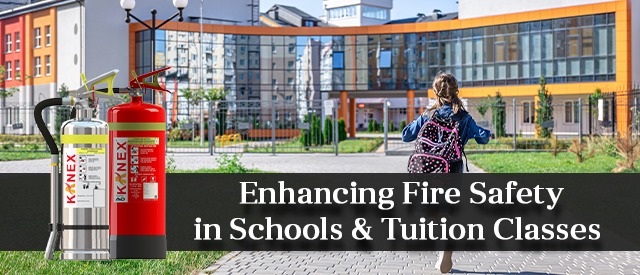Fire safety is a paramount concern in any educational institution, and it's crucial to ensure that students, teachers, and staff are well-protected in case of emergencies. In this comprehensive guide, Kanex Fire delves into the various strategies and measures that can be taken to enhance fire safety in schools and tuitions. By implementing these practices, educational facilities can create a safer environment for everyone within their premises.
Understanding the Importance of Fire Safety
In any educational institution, fire safety holds
significant importance. The safety and well-being of students, staff, and
faculty members depend on the effectiveness of fire prevention and response
strategies. According to statistics, a considerable number of fire incidents
occur in schools and tuitions each year, emphasizing the need for comprehensive
fire safety measures.
Building a Strong Fire Safety Foundation
To establish a solid foundation for fire safety, regular
fire drills are essential. Conducting mock evacuation scenarios helps
familiarize students and staff with exit routes and safe assembly points.
Evacuation plans should be strategically designed, considering factors like the
location of fire exits and accessibility for individuals with disabilities.
Fire Detection and Prevention
Installing smoke detectors and alarms throughout the
premises is a critical step in early fire detection. These systems provide
timely alerts, allowing occupants to evacuate before the situation escalates.
Regular maintenance of fire extinguishers is equally vital to ensure their
functionality.
Creating Fire-Resistant Environments
Constructing educational buildings with fire-resistant
materials is an effective preventive measure. Additionally, proper storage and
handling of flammable materials must be emphasized, especially in laboratories.
Emergency Response and Communication
Designating fire wardens and first aid responders helps
streamline emergency response efforts. Intercom systems and emergency
notifications aid in conveying critical information to all occupants promptly.
Establishing strong communication channels with local fire departments ensures
a collaborative approach to fire safety.
Regular Safety Audits and Upgrades
Periodic safety inspections help identify potential vulnerabilities and shortcomings in fire safety measures. Upgrading Fire Fighting equipment and systems based on emerging technologies and best practices is crucial for maintaining an effective safety infrastructure.
Raising Awareness and Preparedness
Integrating fire safety education into the curriculum
educates students about the importance of responsible behavior. Teaching basic firefighting
techniques equips them with essential life skills and empowers them to act
responsibly in emergencies.
Investing in Advanced Technologies
Exploring advanced technologies such as automated fire suppression systems and IoT-based safety solutions can significantly
enhance fire safety measures. Thermal imaging for early fire detection and
integrated safety systems offer proactive approaches to minimizing risks.
Financial Planning for Fire Safety
Allocating budgetary resources for fire safety measures
ensures that necessary equipment, training, and maintenance are adequately
funded. Assessing insurance coverage and factoring in long-term costs
contribute to comprehensive financial planning.
Legal and Regulatory Compliance
Understanding and adhering to fire safety regulations is
essential to avoid penalties and liabilities. Staying up-to-date with codes and
standards ensures that the institution maintains a safe and compliant
environment.
Conclusion
In conclusion, enhancing fire safety in schools and tuitions is a multifaceted endeavor that demands proactive planning, continuous training, and strategic investments. Prioritizing fire safety not only safeguards lives but also creates a conducive environment for effective learning and growth.
 Reviewed by Kanex Fire
on
August 28, 2023
Rating:
Reviewed by Kanex Fire
on
August 28, 2023
Rating:













No comments: